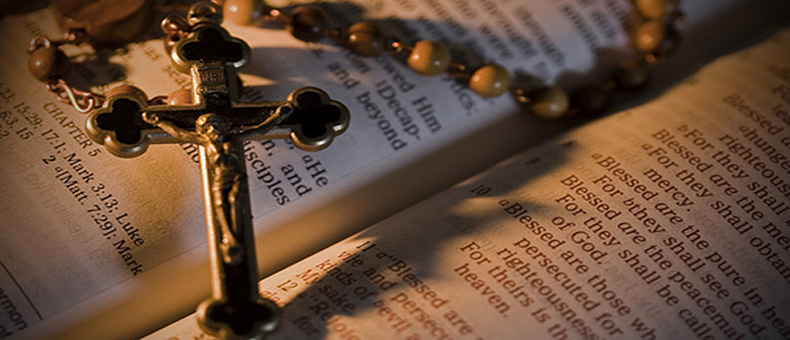Daily Readings
About the liturgy per the United States Conference of Catholic Bishops.
The daily Readings are on the USCCB website including a Spanish version and also Audio versions and Video reflections on the readings. USCCB Daily Readings.
Do we read from the Bible at Mass?
Readings from Scripture are part of every Mass. At least two readings, one always from the Gospels, (3 on Sundays and solemnities) make up the Liturgy of the Word. In addition, a psalm or canticle is sung. These readings are typically read from a Lectionary, not a Bible, though the Lectionary is taken from the Bible.
What’s the difference between a Bible and a Lectionary?
A Lectionary is composed of the readings and the responsorial psalm assigned for each Mass of the year (Sundays, weekdays, and special occasions). The readings are divided by the day or the theme (baptism, marriage, vocations, etc.) rather than according to the books of the Bible. Introductions and conclusions have been added to each reading. Not all of the Bible is included in the Lectionary.
Individual readings in the Lectionary are called pericopes, from a Greek word meaning a “section” or “cutting.” Because the Mass readings are only portions of a book or chapter, introductory phrases, called incipits, are often added to begin the Lectionary reading, for example, “In those days,” “Jesus said to his disciples,” etc.
How is the Lectionary arranged?
The Lectionary is arranged in two cycles, one for Sundays and one for weekdays.
The Sunday cycle is divided into three years, labeled A, B, and C. 2008 was Year A. 2009 was Year B, 2010 is Year C, etc. In Year A, we read mostly from the Gospel of Matthew. In Year B, we read the Gospel of Mark and chapter 6 of the Gospel of John. In Year C, we read the Gospel of Luke. The Gospel of John is read during the Easter season in all three years. The first reading, usually from the Old Testament, reflects important themes from the Gospel reading. The second reading is usually from one of the epistles, a letter written to an early church community. These letters are read semi-continuously. Each Sunday, we pick up close to where we left off the Sunday before, though some passages are never read.
The weekday cycle is divided into two years, Year I and Year II. Year I is read in odd-numbered years (2009, 2011, etc.) and Year II is used in even-numbered years (2010, 2012, etc.) The Gospels for both years are the same. During the year, the Gospels are read semi-continuously, beginning with Mark, then moving on to Matthew and Luke. The Gospel of John is read during the Easter season. For Advent, Christmas, and Lent, readings are chosen that are appropriate to the season. The first reading on weekdays may be taken from the Old or the New Testament. Typically, a single book is read semi-continuously (i.e., some passages are not read) until it is finished and then a new book is started.
In addition to the Sunday and weekday cycles, the Lectionary provides readings for feasts of the saints, for common celebrations such as Marian feasts, for ritual Masses (weddings, funerals, etc.), for votive Masses, and for various needs. These readings have been selected to reflect the themes of these celebrations.
